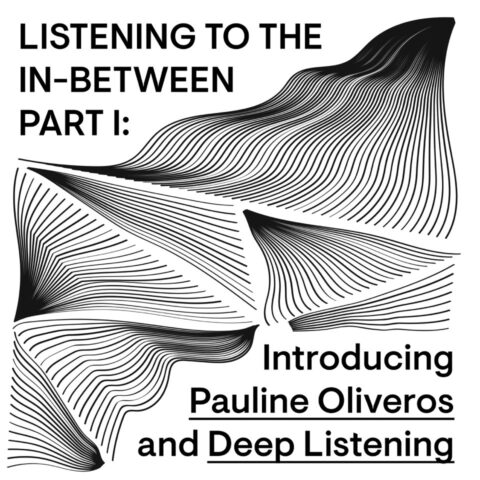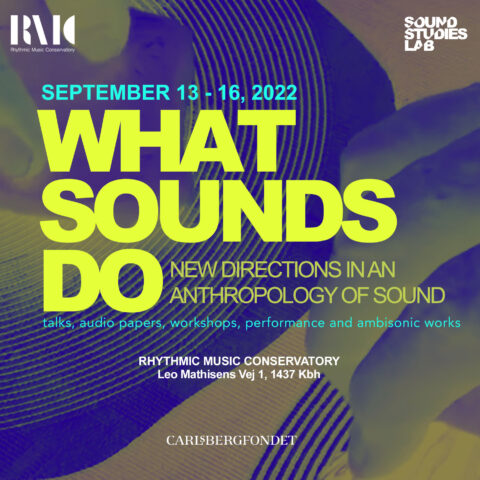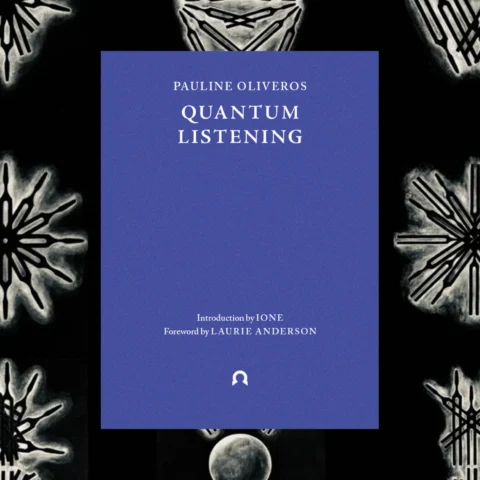
Photo by Lina Velandia
David Vélez is probably one of the most active sound artists you find over the Internet. He has been leading projects such as Impulsive Habitat and The Field Reporter and has released several field recording based works in lots of interesting places including 3leaves, Mandorla, Unfathomless, Taâlem, Mystery Sea, CONV, Semperflorens, Impulsive Habitat, Echomusic, among others.
I’ve had the pleasure of meeting him in person since we’re both from Colombia and we’ve also done some installation/concert work together, and I must say, he is really a wonderful artist and person, able to create very immersive experiences, full of exotic sounds and detailed performances, where insightful perspectives into sound are shown and really special moments are built. He is considered as a key artist in the country and is definitely an essential part of the development of sound art and phonography scene in South America in general.
I was interested to interviewing him for Sonic Terrain for a while and we finally did it, so let’s enjoy our conversation and the great work of Mr. Vélez.
Hi David, please tell us a bit about yourself and how did you get started on working with sound and what’s your background with field recording based works.
First thanks for the interest in my work and my creative process. I have been working with sound for more than 10 years on fields such as acousmatic composition, sculpture and audiovisual composition. On February I finished a MA in Fine Arts and I am actually exhibiting an untitled video piece in the exhibition ‘Reminiscencias sonoras’, an event that is part of the sound week in Bogotá at the Santa Fé gallery.
I started capturing sounds on 2004 using a camcorder and a microphone but recordings only became a major part of my work until 2007 when I started using a handy recorder to capture the urban environments of NYC (where I lived for 3 years) and also recording wild life sounds in different spots between Colombia and the US. A few years ago I got interested in recording with contact microphones and hydrophones as well.
 I know you were recently speaking at “In The Field” symposium. Could you tell us how was that experience and what were the topics of your talk? Could you give us a brief introduction of it?
I know you were recently speaking at “In The Field” symposium. Could you tell us how was that experience and what were the topics of your talk? Could you give us a brief introduction of it?
It was a great experience to hear what so many people had to say about their work. I particularly enjoyed the lectures of Simon Elliot, Chris Watson and Christina Kubisch. It was also a great experience to personally meet Cheryl Tipp, Jez Riley French, Maria Papadomanolaki and Yorgis Sakellariu with whom I have worked on different projects. On my presentation I talked about my work on a very personal way making emphasis on how working with recordings prompted an interest in the listening process and the whole phenomenological aspect to it that led me to explore fields such as sculpture and now video. I also talked about the formal and poetic potential of contingence and unexpected and unwanted sounds in the field recording practice.
You have such amazing activity over the Internet, curating at Impulsive Habitat and running The Field Reporter. How has been your experience with those projects and how you see Internet has contributed to artists interested on these fields?
First I would like to point out that both of these projects are based on teamwork. On Impulsive Habitat we are four people and on The Field Reporter I am part of a team composed by 9 editors. Impulsive Habitat is a very gratifying project that we hope has allowed surging artists to give their work exposure and well-known artists to expose their work to new audiences.
The Field Reporter was conceived with the idea of discussing the punctual aspects of recording and the use of recordings to work with acousmatic compositions and other media. After two years we hope that the articles, reviews and discussions published have prompted relevant questions, reflections and ideas.
Internet makes everything easy, affordable, quick, immediate…but I still think is very important to work with people on non-virtual environments. From my experience Internet is safe and builds a comfort zone where you can filter and avoid confrontational and challenging scenarios, which for me are essential on the creative process. Safe environments eventually become boring and sterile.

Specifically talking about Impulsive Habitat, could you tell us how is your curatorial process? How do you choose the artists and works to be published?
We are a team of four people: Pedro Leitâo, Jame McDougall, Juan José Calarco and I, and we usually select the publications from the works we receive as proposals. We also invite artists that interest us to release material with the label. We base our judgment exclusively in aesthetic aspects; in regard of the material, as long as the composition uses any kind of recordings we consider it potential.
I wonder if there’s any special reason that led you guys to go with a creative commons license instead of CDs or digital paid downloads. The label seems to have a lot of success on this kind of method and artists seems to like it and support it.
We were interested on a self-sustainable project that we could launch quickly with a small budget so the digital format was just the perfect fit. By using a digital platform we were also going to have a larger and broader coverage than if we released CD’s or any physical format. The big leap for us was starting to release the works on FLAC format, which increased the sound quality of our publications without requiring a physical media. Something interesting on this regard is that some journals that only reviewed physical releases a few years ago are now reviewing digital ones as well: in a way the digital release format is now more legit than ever before. Anyway we notice that many artists still refuse to release their work on digital formats for a variety of reasons. I would also like to add that certain Music and Art Rights Organizations sadly make it impossible for certain artists to release digital.
It’s interesting that Impulsive Habitat has been giving opportunities for South American artists to show their work and feature the rich soundscapes and territories the continent has. How do you think about the field recording and sound art scene in that particular side of the world? How has been your experience being one of the few sound recordists and field-recording artists in your country?
Artists from Europe, USA, Canada, Australia and Japan already had plenty of exposure on the label so this year we guessed it was time to turn the attention elsewhere and bring new approaches to our listeners. Latin America has emerged not only as the subject of the recordings of many foreign artists but also as a place where the number of local artists working with phonography and the subsequent listening culture is growing. The thing is that the people who record sounds not exclusively use them to make music; a lot of them for example use recordings as documentation, diaries and logs, or simply to play them back as part of installations and other exhibitions.

I see you’ve been leading your work in a very special way, using field recordings and acousmatic experiences to reflect an interesting reflection on something like chaos and nature. How is this life-catastrophe, creation-destruction relates to your work? Is that a conceptual framework you always like to use or is more some kind of style or way of blending sounds and building specific experiences? How has this vision evolved over the years?
More than the relation between chaos and nature what interests me is the relation between man and nature, the way they clash and they way they co-exist. The catastrophe is more associated with the fact that in nature everything gets eventually destroyed and/ or transformed and this affect us as emotional people with limited time to live.
I would also like to point out that when you have destruction you have interaction between a force that destroys and a subject that is destroyed and this is what formally and conceptually interests me. Right now I feel my creative and research process leans toward the invisible and intangible character of time and how it draws the illusion of movement and change.
Is that related with you working with junk, like that last workshop you did at Brasil? Could you tell us about your approach on doing that? I heard you went there without your computer and sounds.
My project ‘Derive and catastrophe’ happened to be extremely complex in terms of production and logistics; when it was over I found myself questioning my own methods and premises. When I traveled to Brazil to the ‘Arteocupa’ exhibition I had the feeling that I should be able to work effectively without so much planning or logistics. The idea with Arteocupa (organized by the Federal University of Santa Maria) is to combine the process and the final exhibition in one event so I felt it was a great time to start something from scratch and exhibit it. Arteocupa took place in an abandoned train station so what I did was using an abandoned locomotive as scenario and perform Foley-like actions to a blindfolded audience inside the machine using junk and other metallic objects. I played with these objects exploring the notion of distance and vibration. The idea was making emphasis on two things:
1) How the emotional perception of time is the main stock in acosumatic composition / performance, and 2) How in acousmatic experience the object is built in the perception of the listener and how this object is created when the listener’s memory is activated with sound. For this project I had the help of student Roger Sarquis who got heavily involved in all aspects; without his help the project wouldn’t have been as effective as it turned to be for the audience.

How do you listen? Is there any kind of way you have for doing it and do you think you listen different when recording/composing than when you’re in your daily activities? Also, what could be the ideal way for listening to your works?
I have the bad habit to worry a lot about things and sometimes when I find a pleasant sound the worrying stops and things get more enjoyable and emotional and this is a very important moment for me in terms of the reflections and questions that are prompted there.
This might sound a little bourgeois but I guess my compositions are best listened on a sofa or a big chair, in the dark late in the night preferably with no distractions and with a nice set of twitters and a proper sub-woofer: resonance, texture and detail are very important in my work. If the listener falls asleep, even better, now my piece will be played to his sub-conscious. Anyway any scenario is fine and proper.
What the terms silence and noise say to you? Is there a way you integrate them in your work?
Noise for me is anything unwanted or unexpected, and even harmful as in the case of sound pollution. Noise is also a derivation, something extra that occurs. Worrying is noise. Advertising is noise. Anything that distracts one from a natural spontaneous perceptual focus is noise.
Silence is death or in a more quotidian way, deafness.
Noise is part of my quotidian life so I assume it has plenty of implications in the way I work with sound.
I’ve read several interesting essays you have published, where you integrate sound, photography and text in a very nice way. Is that a way you find for telling a story different than using those elements individually? What do you think is the relationship on combining different ways of information-communication and how’s that reflected in the way you expose an environment or situation like you did on “El Coyote” for example?
Before working with sound and photography I started to play around with video to the point I studied Documentary production in Brooklyn College in the early 2000’s. Editing the documentaries prompted an interest in audio editing which led me to work with sound. Anyway 10 years later I worked with video again for the ‘Reminiscencias sonoras’’ exhibition exploring movement in a very still and static way. I shoot long static close ups of the cyclic mechanisms of old audio equipment and recorded their silent machinery with contact microphones. What I want with this piece is to explore the experience of the spectator when confronted to extended repetition of moving images and continual sounds and how initial harshness and discomfort could evolve into a soothing and contemplative experience.
‘El Coyote’ and the ‘Grand Union Canal at Harlesden’ series combine three elements: text, photography and phonographic documentation.
The text explores the questions and reflections that emerge during the acoustic exploration of a certain a location. Some of these questions are exclusively related to the acoustic experience but some others relate to certain concrete aspects of the location and here the ‘illustrative’ character of photography becomes helpful. I don’t consider sound a proper media to illustrate; recorded sounds tend to have some sort of abstract quality to them that works in many ways but illustrating is not necessarily one of them.

How would you think is the future of sound in humanity? Is there something you imagine or already see happening?
Sound is a contemporary novelty; you have sound art, sound weapons, music therapy, psychoacoustics, etc…etc… In art the interest towards sound probably relates with the disappearance of the physical visible and tangible object, opening room for the imaginary object built in the listener’s conscience. The object is linked to the art market and I guess many people don’t like for art to be part of consumerism and the financial investment dynamics.
Finally, could you recommend us some sounds, places, field recording releases, labels, films, books and/or artists you personally think our community would enjoy?
Any place can be interesting it’s more about where you focus you attention to and what emotions and thoughts arise on the process. I love the sound of Bogotá or any major city at 3 AM in a weekday, very quiet. About releases, labels and artists I recommend to visit The Field Reporter website and check for the archives and look for the releases I have reviewed or listed in the yearly retrospective posts. Right now I’d recommend ‘Compound form’ by Coppice and also ‘It just ain’t flapping’ by VA AA LR (Vasco Alves, Adam Asnan and Louie Rice) .
I enjoy and recommend most the movies of Woody Allen, Lars Von Trier, Stanley Kubrick, Andrei Tarkowski, Harmony Korine. Werner Herzog, Luis Buñuel and Alejandro Jodorowski. I also advice to check the TV shows of Larry David and Louis CK; comedy is the sublimation of the dramatic nature of existence: we are born to die, how more dramatic it can get?
Books… I will paste the bibliography of my MA thesis, which includes books and academic papers
BARBOUR Julian – The end of time, LYOTARD Jean Francois – The inhuman, SONTAG Susan – Regarding the Pain of Others, BARTHES, Roland – Camera Lucida, CELESTE, Reni – Love and catastrophe: filming the sublime in Hiroshima mon amour, SHORES, Corry – The Rhythm of Sensation on the Surface of Sense, CAPRA, Fritoj – The Tao of phyisics, JAHN Robert DUNNE Brenda – Margins of reality, NANCY, Jean-Luc – Listening and TOOP, David – Sinister resonance.
I would also like to advice to check some art pieces that can be interesting for your readers: ‘I Wish You Hadn’t Asked’ by James Dive, ‘The Slow Inevitable Death of American Muscle Car’ by Jonathan Schipper, ‘Tumble Room’ by Martin Kersel, ‘Bang Bang Room’ by Paul McCarthy, ‘Splitting’ by Gordon Matta-Clark, ‘The Quintet of the Astonished’ by Bill Viola, ‘A thousand years’ by Damien Hirst, ’20:50’ by Richard Wilson and the work of Tacita Dean.
Links: David Vélez | Impulsive Habitat | The Field Reporter





